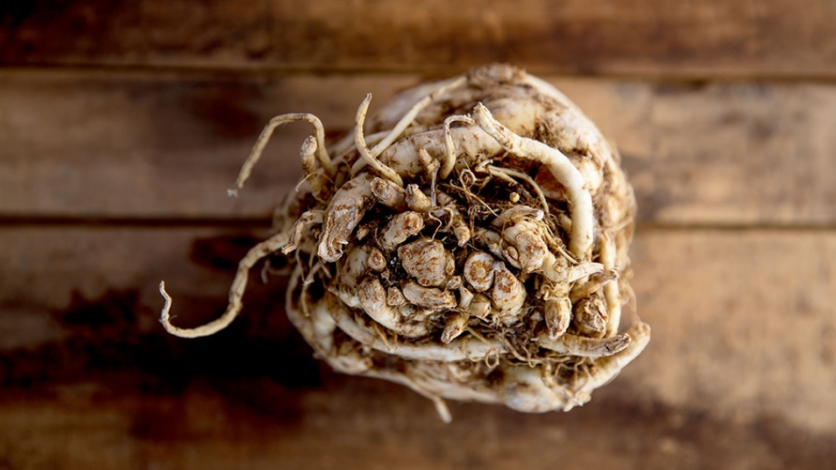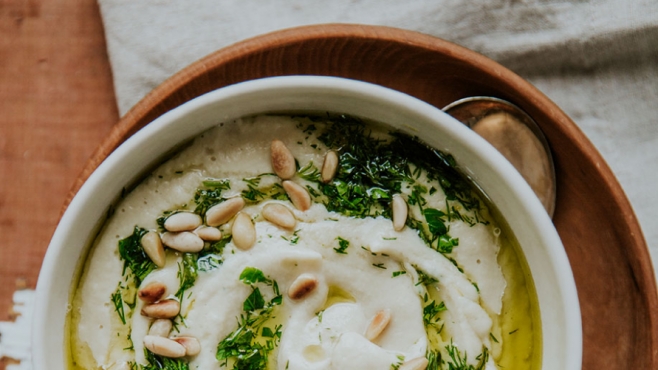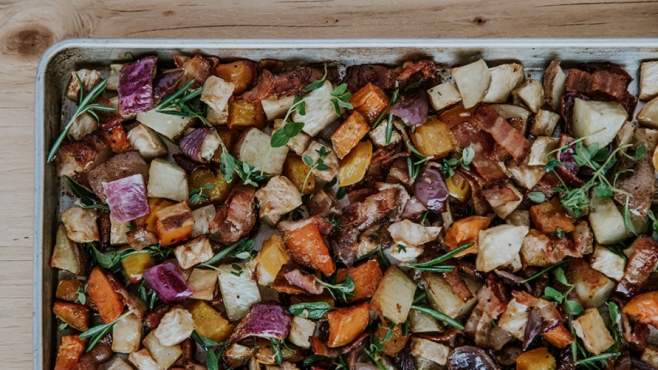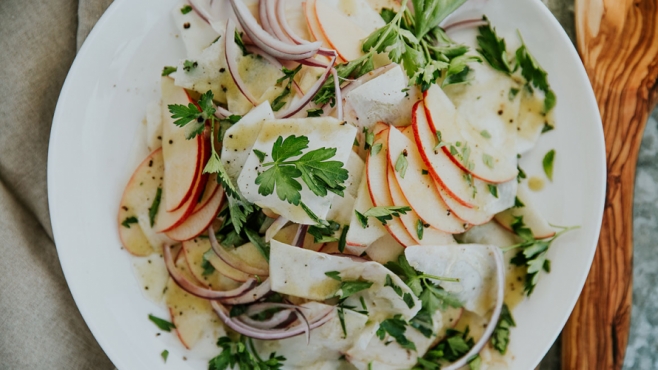
What is celeriac, anyway?
Is it just the root of the celery plant? Well, yes and no. Historically, celeriac was eaten as part of the whole celery plant. Wild celeries, which grow in salty, marshy conditions around the world, became a staple for early cooks in the Mediterranean. Because the celery stalks and leaves can be pungent and bitter, the milder root became a popular addition to soups and stews.
As the demand for the small celery root grew, botanists bred the plants to produce a larger tuber and fewer stems (the majority of the celeriac is a hypocotyl, a storage organ located at the base of the plant between the roots and the stem, similar to rhutabaga, beets, radishes and carrots). Today’s celeriac can grow as large as a bowling ball.
As a close relative of the carrot in the Apiaceae family — parsnips, fennel, parsley are also related — celeriac contains many of the same nutrients and health benefits. It is high in vitamin K, which is great for your bones, a good source of vitamin C and the important B-complex vitamins. It is also an excellent source of phosphorous, iron and many anti-oxidants and it's high in dietary fibre. It's even said that a glass of celeriac juice (what?) calms the nerves and promotes a good night’s sleep.
Now that I bought one, what am I going to do with it?
If you don't plan to use it right away, celeriac stores best in a cool, moist environment. Wrapped in a perforated bag and placed in the refrigerator is a good choice or you can pack it in damp sand in your cold storage. Celeriac is best if stored for no more than a few months.
Once you are ready to eat it, give it a good wash — that entanglement of roots traps a lot of dirt. Next, remove the roots and stem with a knife, leaving only the round portion of celeriac. If you have a sturdy, sharp peeler, use it to peel off the skin or use a knife, running it from top to bottom to remove all of its lumpy, brown skin.
What's left is a pale, naked orb. This cleaned root will oxidize quickly, so be sure to peel it just before using it or store it in acidulated water (water and vinegar, lemon juice or another acid) until you're ready.
Now that the celeriac is ready to go, there are many preparations and techniques that can be used.
Celeriac does not have a strong identifiable flavour, so is easily overpowered. There are notes of celery, but definitely not the green, bitterness of the stalks. There is also a delicate nutty, earthy flavour.
Celeriac can be eaten raw. Cut it into sticks on a crudité plate or shred it, like a carrot or beet, over a salad. Mixed with mayonnaise, lemon juice and chopped parsley, your grated celeriac becomes a beautiful remoulade — a perfect accompaniment for seared scallops.
If a raw preparation isn’t of interest, celeriac can be used in addition to, or as a substitute for ,many other root vegetables. Boiled or steamed, by itself or with some potato, it makes a wonderful creamy soup or purée. Cut into cubes and roasted or pan fried, it takes on a golden caramelized exterior with a lusciously soft interior. Though very low in starch, when thinly sliced with onion and cream, this root is a great potato substitute in your next gratin.
However you choose to prepare your celeriac, if you haven’t already, it's time to give it a try. Rest assured, the next time you are shopping at the market, take a good long look at one — it will not turn you to stone.







